Evaluation of Seasonal Climate Predictability Considering the Duration of Climate Indices
Abstract
:1. Introduction
2. Materials and Methods
2.1. Study Area
2.2. Forecasting Model Setup
3. Results
3.1. Teleconnection Analysis
3.2. Precipitation Forecasts
3.3. Temperature Forecasts
4. Discussion
5. Conclusions
Author Contributions
Funding
Data Availability Statement
Conflicts of Interest
References
- White, C.J.; Carlsen, H.; Robertson, A.W.; Klein, R.J.T.; Lazo, J.K.; Kumar, A.; Vitart, F.; Coughlan de Perez, E.; Ray, A.J.; Murray, V.; et al. Potential applications of subseasonal-to-seasonal (S2S) predictions. Meteorol. Appl. 2017, 24, 315–325. [Google Scholar] [CrossRef]
- Doblas-Reyes, F.J.; Garcia-Serrano, J.; Lienert, F.; Biescas, A.P.; Rodrigues, L.R.L. Seasonal climate predictability and forecasting: Status and prospects. Wiley Interdiscip. Rev. Clim. Chang. 2013, 4, 245–268. [Google Scholar] [CrossRef]
- Schepen, A.; Wang, Q.J.; Robertson, D.E. Combining the strengths of statistical and dynamical modeling approaches for forecasting Australian seasonal rainfall. J. Geophys. Res. 2012, 117, D20107. [Google Scholar] [CrossRef]
- Kim, H.-J.; Oh, S.M.; Chung, I.-U. An empirical model approach for seasonal prediction of summer temperature in South Korea. J. Clim. Res. 2018, 13, 17–35. [Google Scholar] [CrossRef]
- Kim, C.-G.; Lee, J.; Lee, J.E.; Kim, N.W.; Kim, H. Monthly precipitation forecasting in the Han River basin, South Korea, using large-scale teleconnections and multiple regression models. Water 2020, 12, 1590. [Google Scholar] [CrossRef]
- Kim, C.-G.; Lee, J.; Lee, J.E.; Kim, N.W.; Kim, H. Monthly temperature forecasting using large-scale climate teleconnections and multiple regression models. J. Korea Water Resour. Assoc. 2021, 54, 731–745. [Google Scholar]
- Kim, C.-G.; Lee, J.; Lee, J.E.; Kim, H. Application of multiple linear regression and artificial neural network models to forecast long-term precipitation in the Geum River basin. J. Korea Water Resour. Assoc. 2022, 55, 723–736. [Google Scholar]
- Feng, P.; Wang, B.; Liu, D.L.; Ji, F.; Niu, X.; Ruan, H.; Shi, L.; Yu, Q. Machine learning-based integration of large-scale climate drivers can improve the forecast of seasonal rainfall probability in Australia. Environ. Res. Lett. 2020, 15, 084051. [Google Scholar] [CrossRef]
- Kang, B.; Lee, B. Application of artificial neural network to improve quantitative precipitation forecasts of meso-scale numerical weather prediction. J. Korea Water Resour. Assoc. 2011, 44, 97–107. [Google Scholar] [CrossRef]
- Lee, K.-J.; Kwon, M. A prediction of precipitation over East Asia for June using simultaneous and lagged teleconnection. Atmosphere 2016, 26, 711–716. [Google Scholar] [CrossRef]
- Kim, M.-K.; Kim, H.-S.; Kwak, C.-H.; So, S.-S.; Suh, M.-S.; Park, C.-K. Long-term forecast of seasonal precipitation in Korea using the large-scale predictors. J. Korean Earth Sci. Soc. 2002, 23, 587–596. [Google Scholar]
- Kim, H.-S. Seasonal precipitation forecast in the Korean Peninsula using delay-correlated large-scale predictors. Atmosphere 2002, 12, 133–136. [Google Scholar]
- Kim, M.-K.; Kim, Y.-H.; Lee, W.-S. Seasonal prediction of Korean regional climate from preceding large-scale climate indices. Int. J. Climatol. 2007, 27, 925–934. [Google Scholar] [CrossRef]
- Hwang, Y.-J.; Ahn, J.-B. A correlation of East Asian summer precipitation simulated by PNU/CME CGCM using multiple linear regression. J. Korean Earth Sci. Soc. 2007, 28, 214–226. [Google Scholar] [CrossRef]
- Kwon, M.; Lee, K.-J. A prediction of Northeast Asian summer precipitation using the NCEP climate forecast system and canonical correlation analysis. J. Korean Earth Sci. Soc. 2014, 35, 88–94. [Google Scholar] [CrossRef]
- Jo, S.; Ahn, J.-B. Statistical forecast of early spring precipitation over South Korea using multiple linear regression. J. Clim. Res. 2017, 12, 53–71. [Google Scholar] [CrossRef]
- Park, M.-G.; Kang, S.-U.; Lee, J.-J.; Lee, H.-H.; Kim, H.-J. Seasonal precipitation forecast using big data. Mag. Korea Water Resour. Assoc. 2018, 51, 6–12. [Google Scholar]
- Han, B.-R.; Lim, Y.; Kim, H.-J.; Son, S.-Y. Development and evaluation of statistical prediction model of monthly-mean winter surface air temperature in Korea. Atmosphere 2018, 28, 153–162. [Google Scholar]
- Yoo, C.; Johnson, N.C.; Chang, C.-H.; Feldstein, S.B.; Kim, Y.-H. Subseasonal prediction of wintertime East Asia temperature based on atmospheric teleconnections. J. Clim. 2018, 31, 9351–9366. [Google Scholar] [CrossRef]
- Jung, J.; Kim, H.S. Predicting temperature and precipitation during the flood season based on teleconnection. Geosci. Lett. 2022, 9, 4. [Google Scholar] [CrossRef]
- Lee, Y.; Kim, H.-R.; Noh, N.; Kim, K.-Y.; Kim, B.-M. Enhancing forecast skill of winter temperature of East Asia using teleconnection patterns simulated by GloSea5 seasonal forecast model. Atmosphere 2023, 14, 438. [Google Scholar] [CrossRef]
- Kwon, M. Development of Seasonal Prediction Models for East Asian Summer Monsoon/Changma; Korea Institute of Ocean Science & Technology: Busan, Republic of Korea, 2015; CATER 2012-3070. [Google Scholar]
- Moriasi, D.N.; Arnold, J.G.; Liew, M.W.; Bingner, R.L.; Harmel, R.D.; Veith, T.L. Model evaluation guidelines for systematic quantification of accuracy in watershed simulations. Trans. ASABE 2007, 50, 885–900. [Google Scholar] [CrossRef]

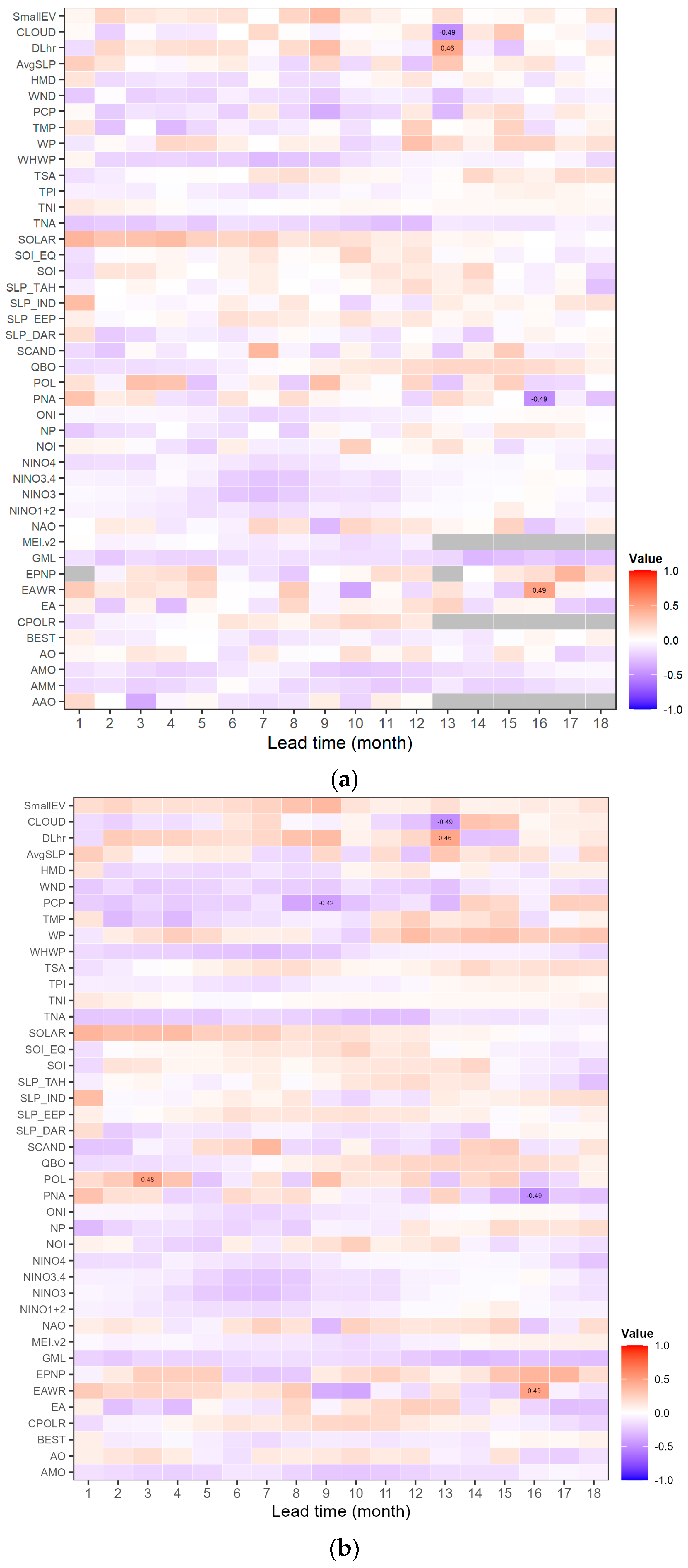
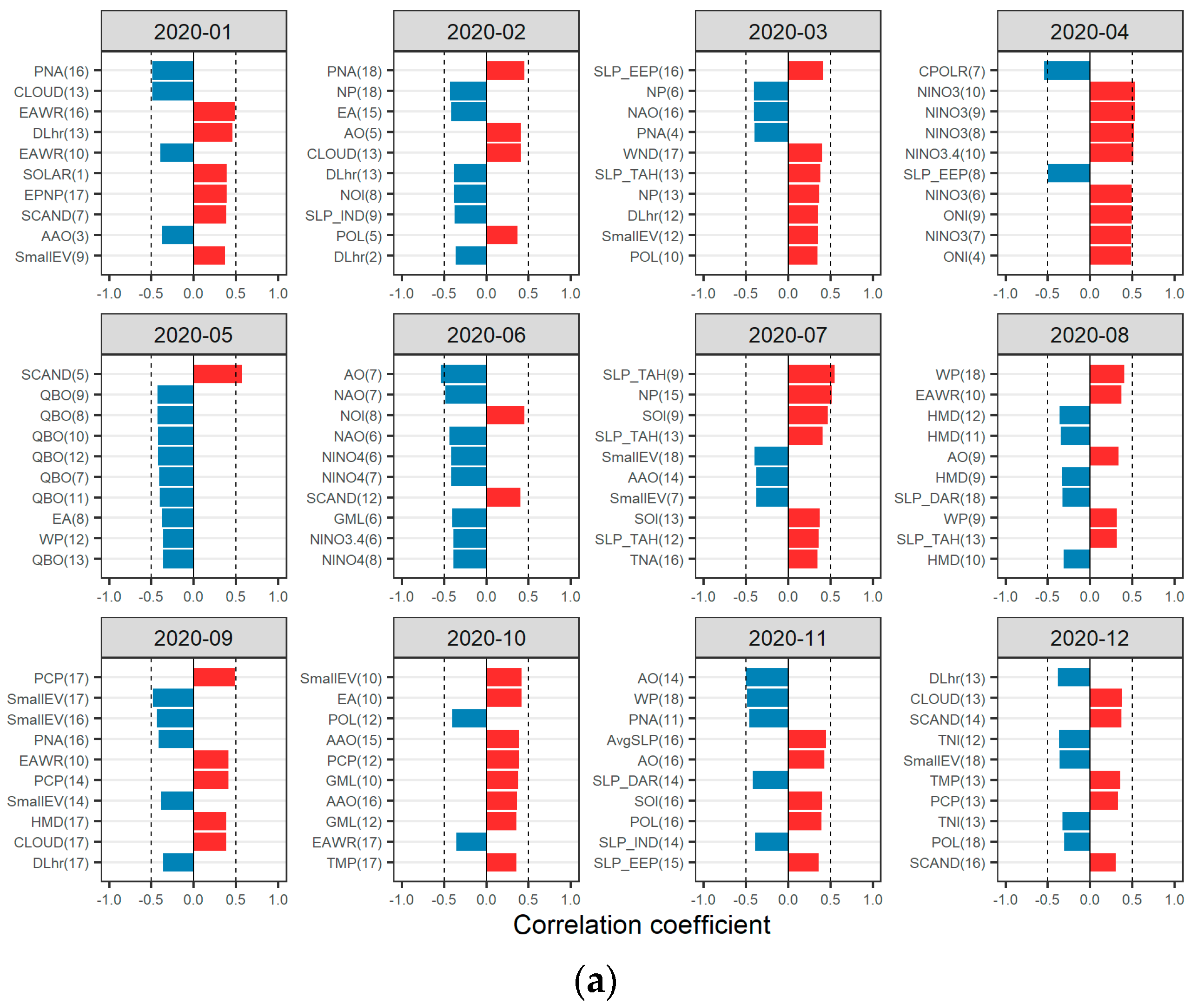
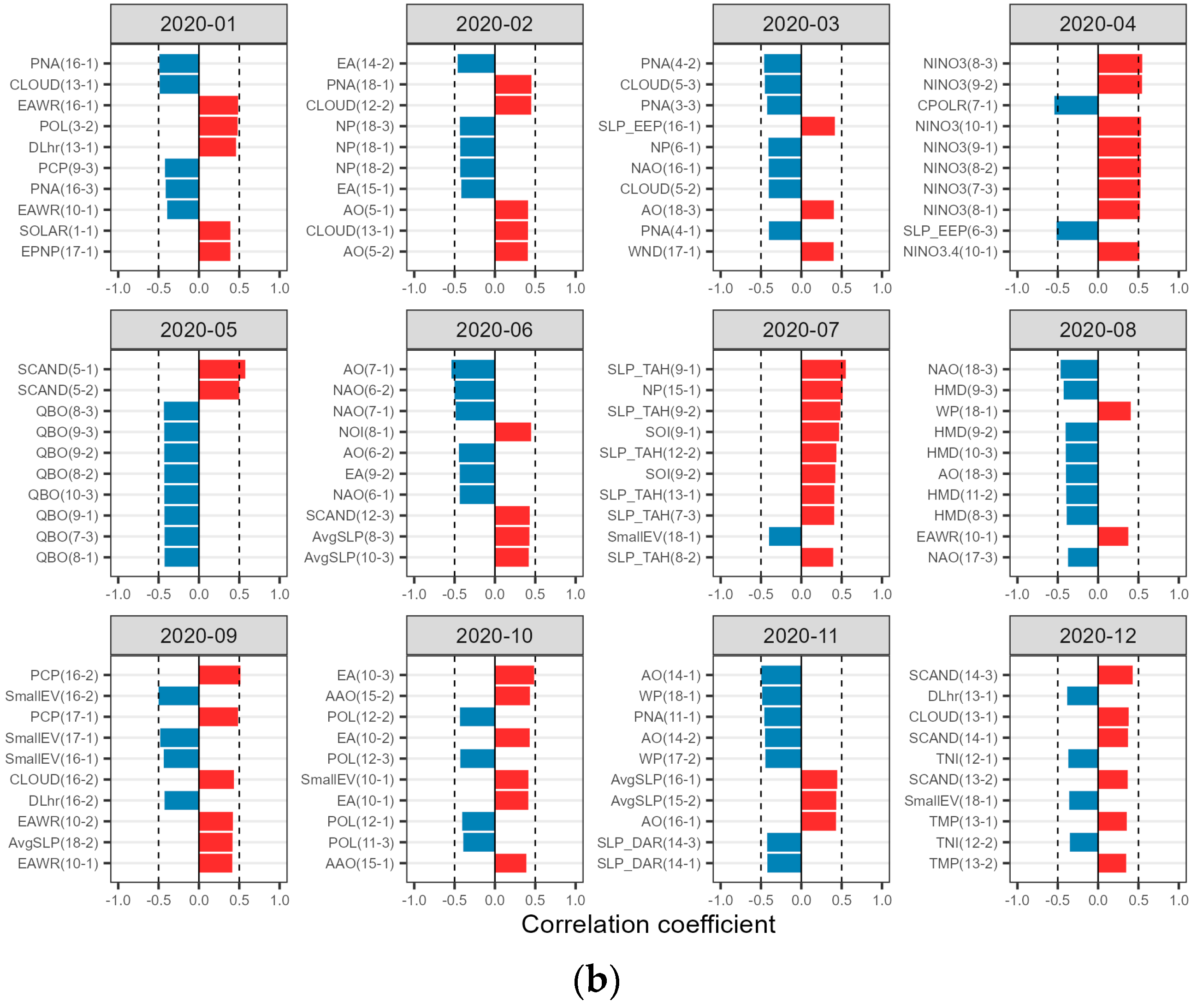
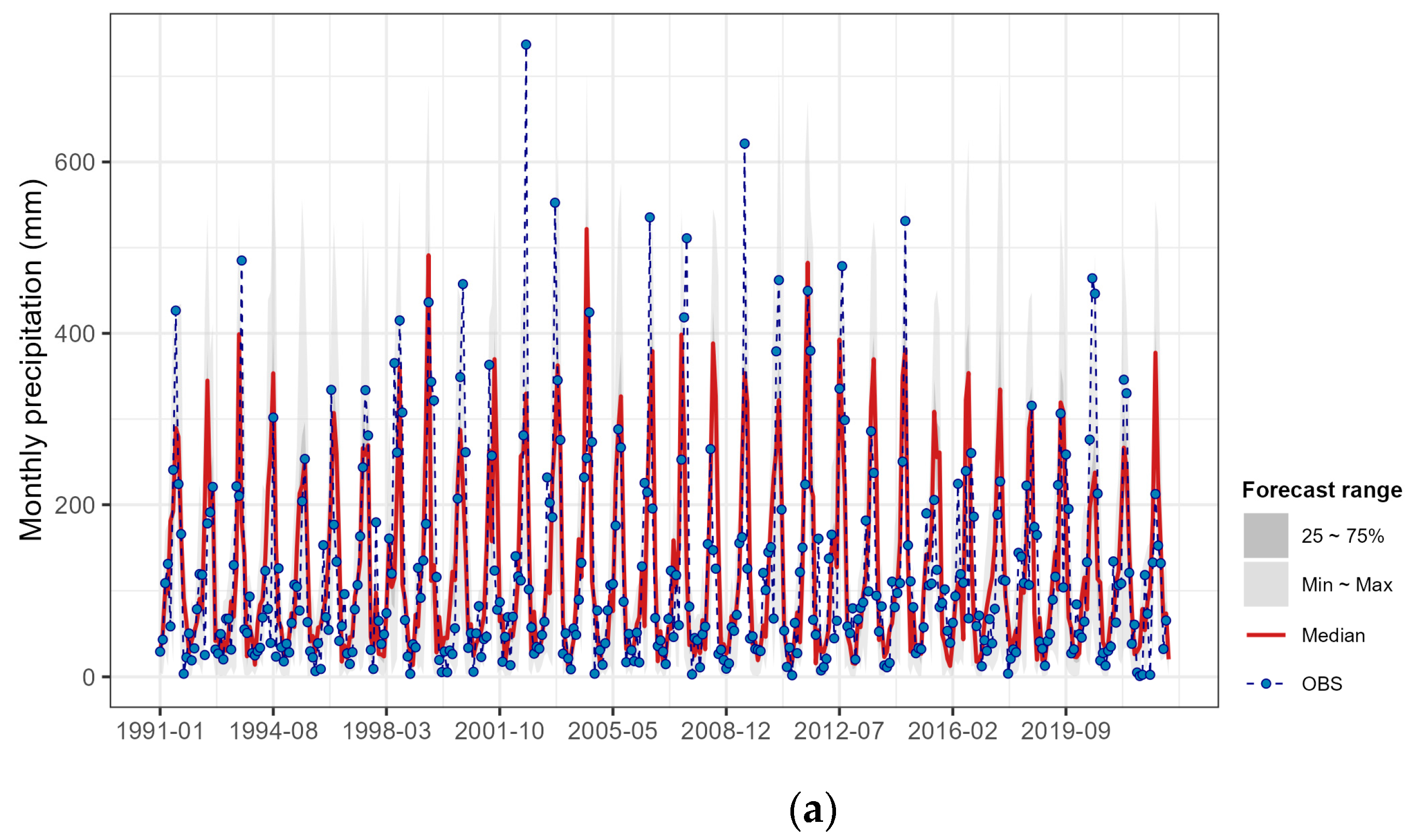

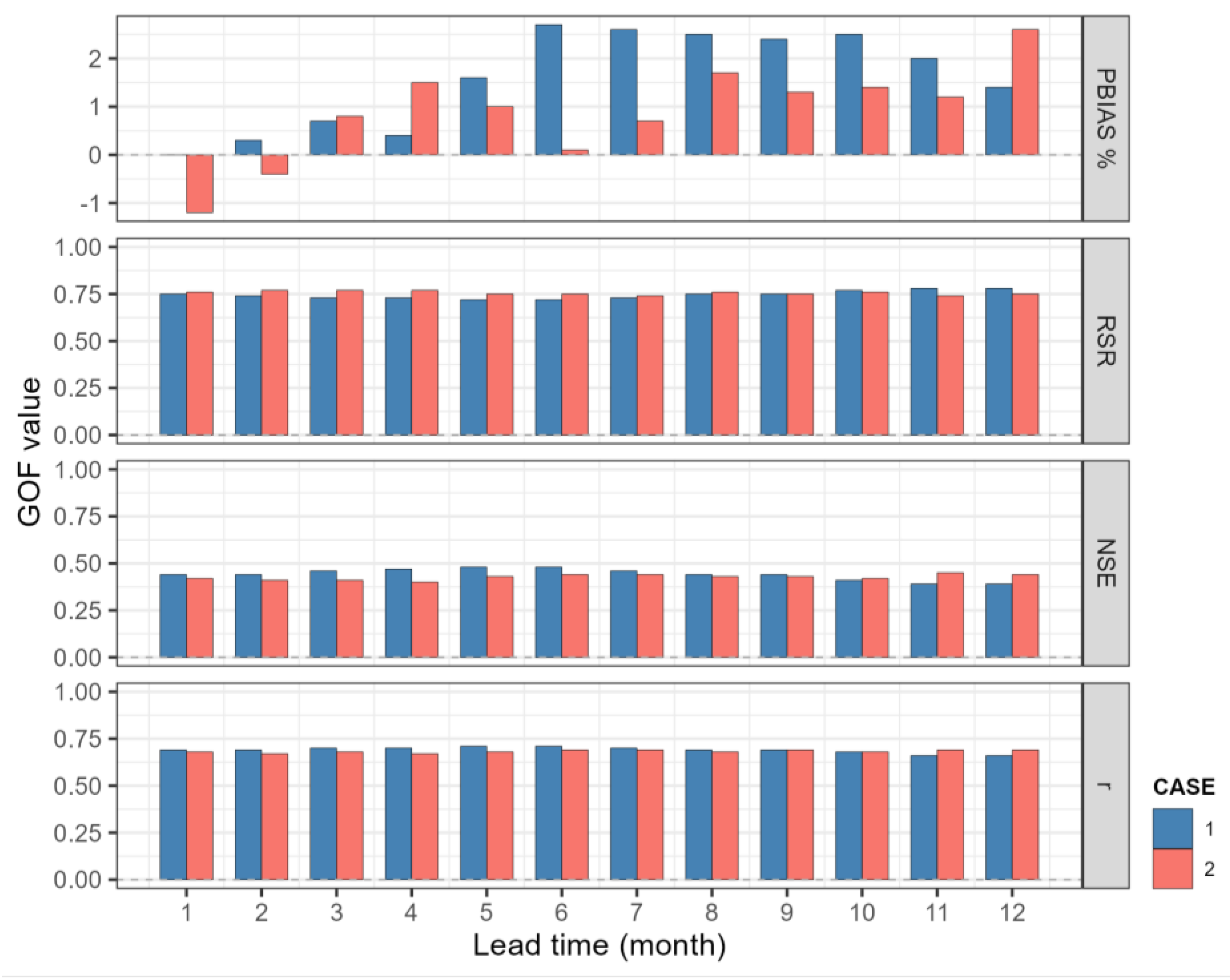
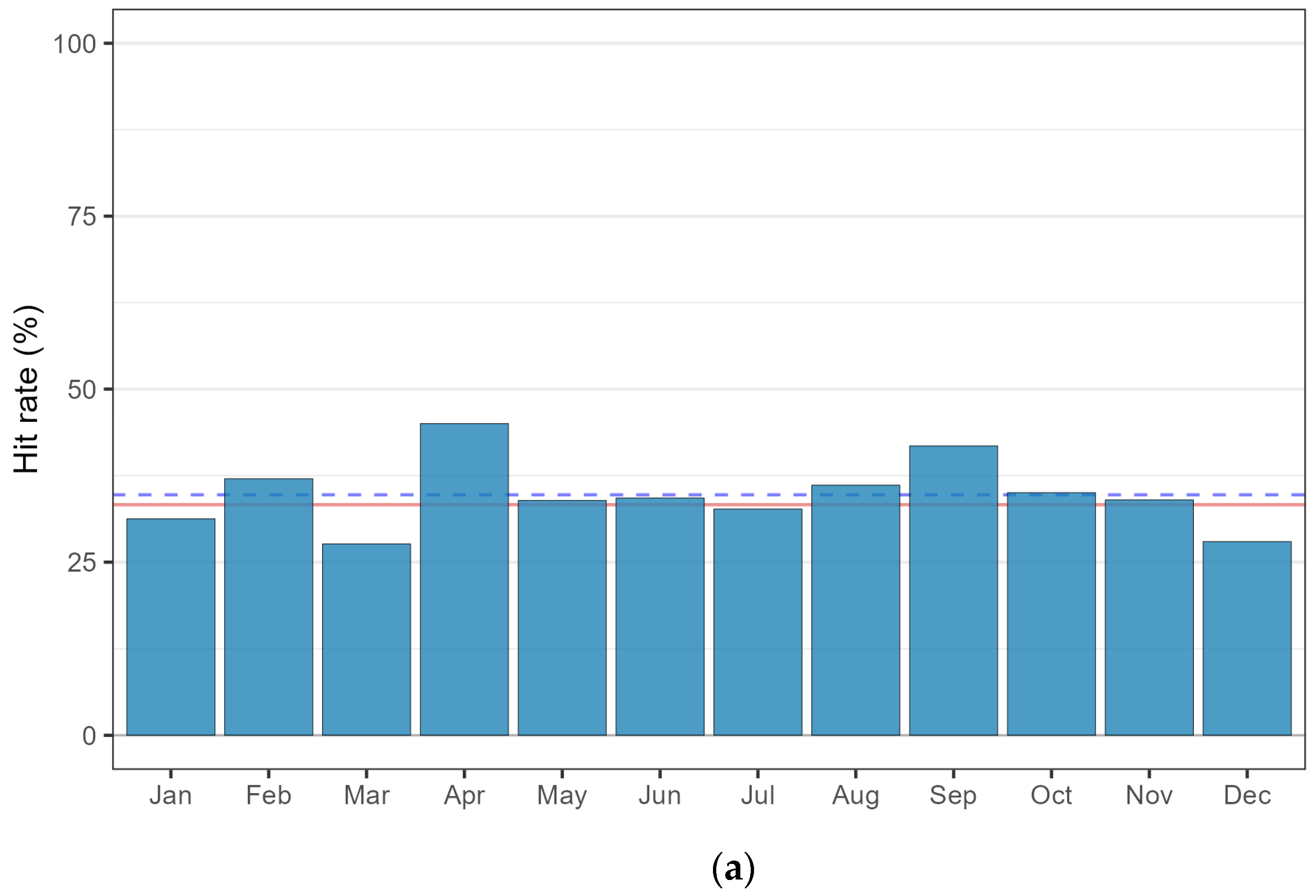
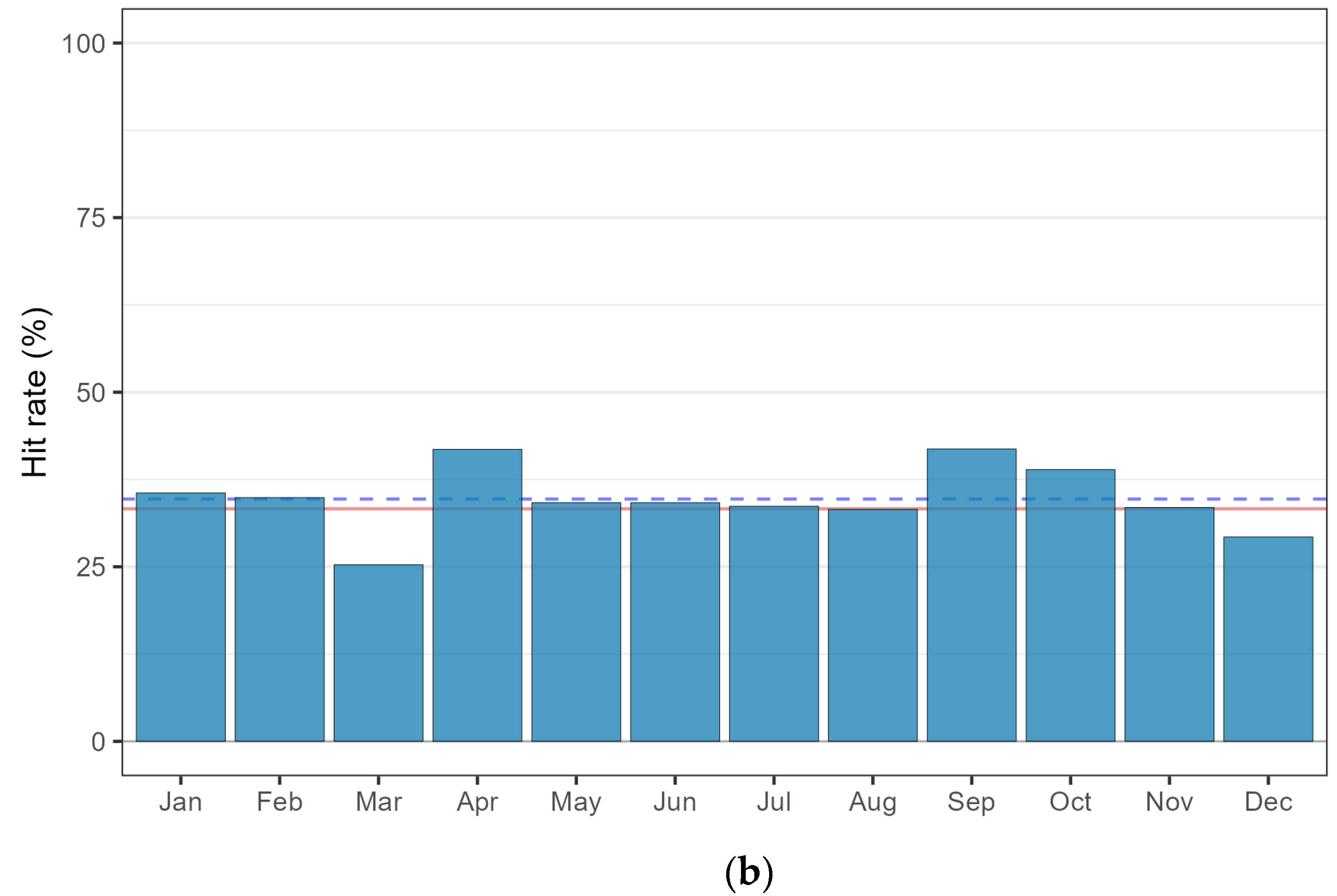
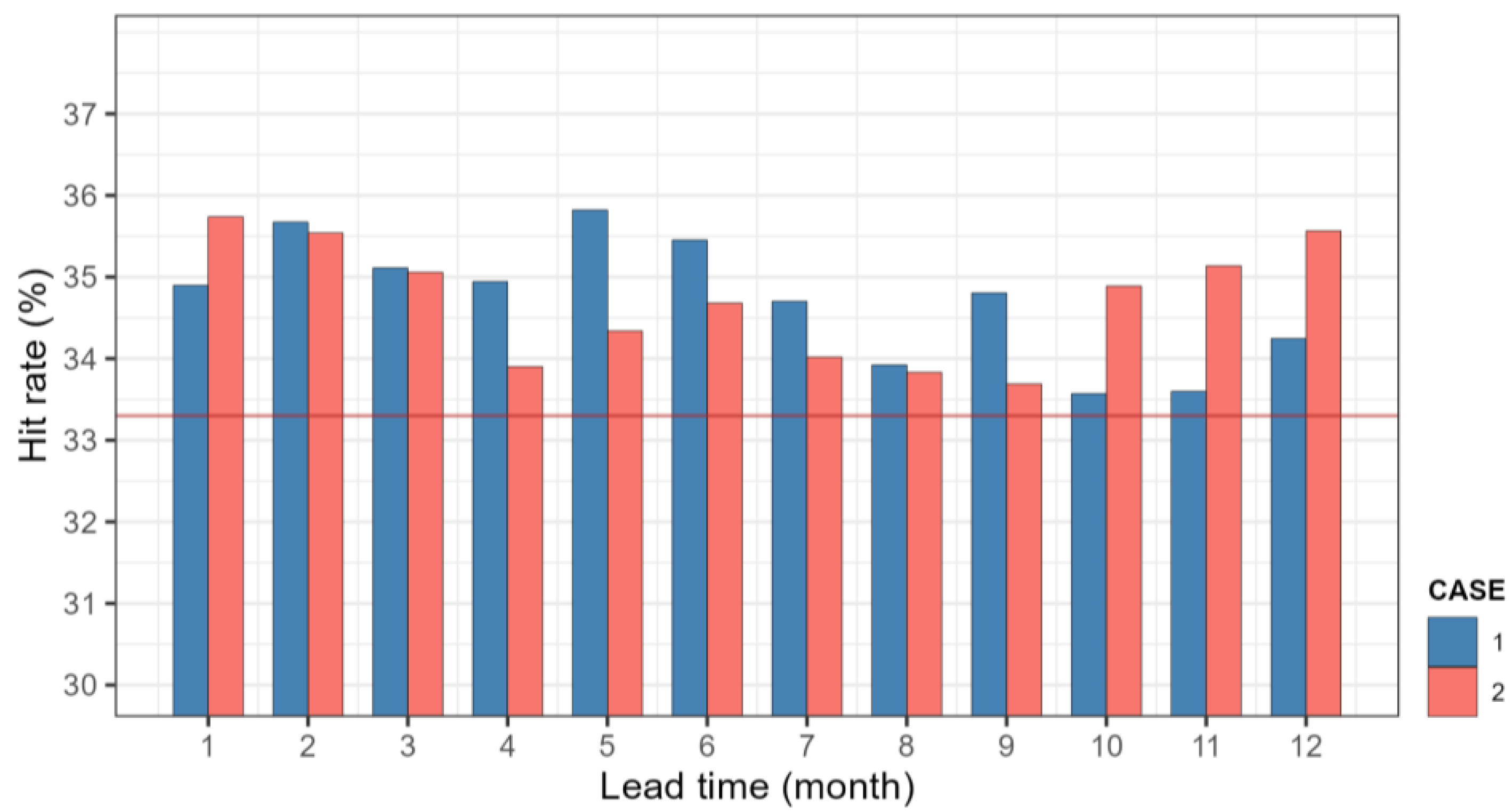
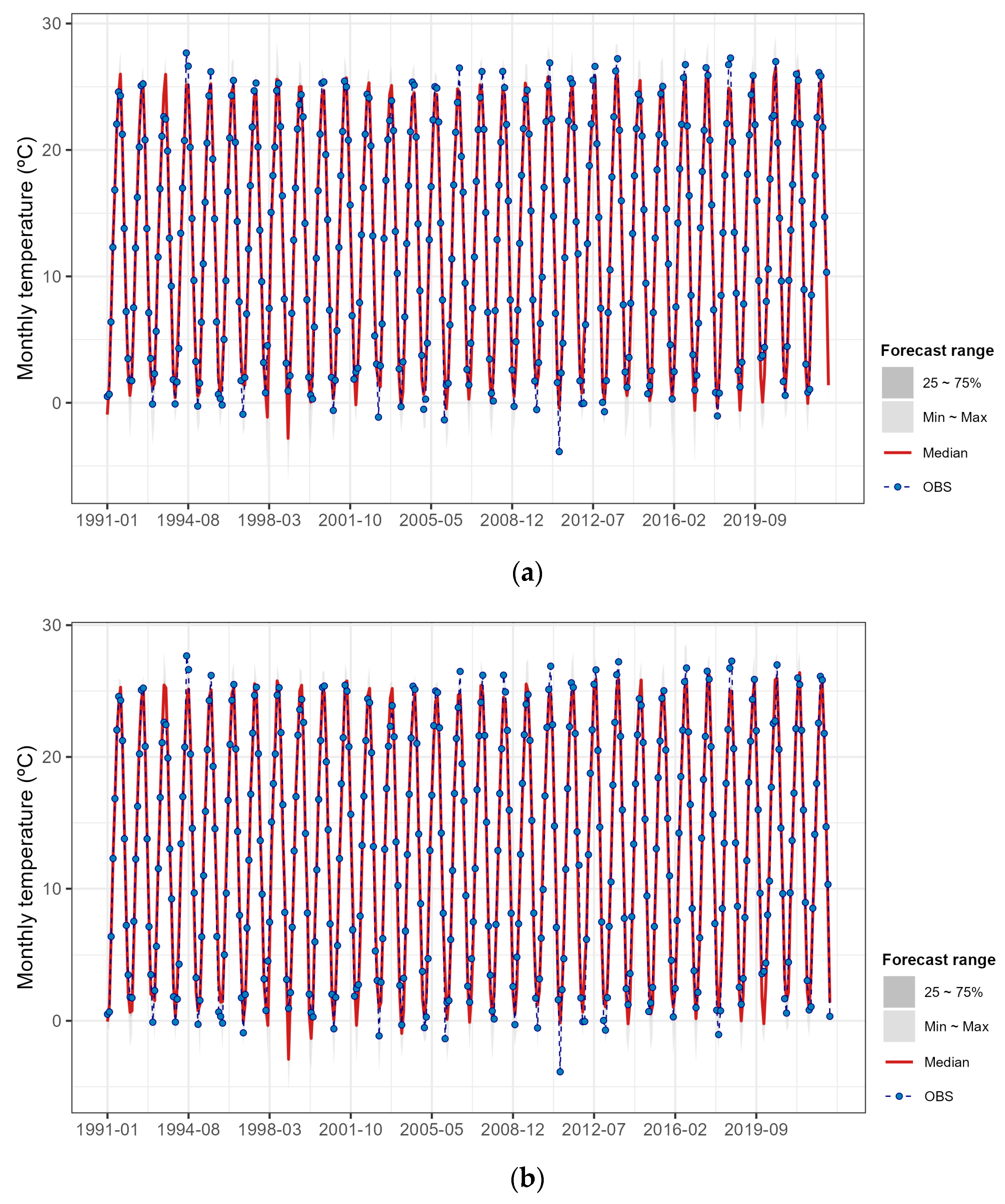
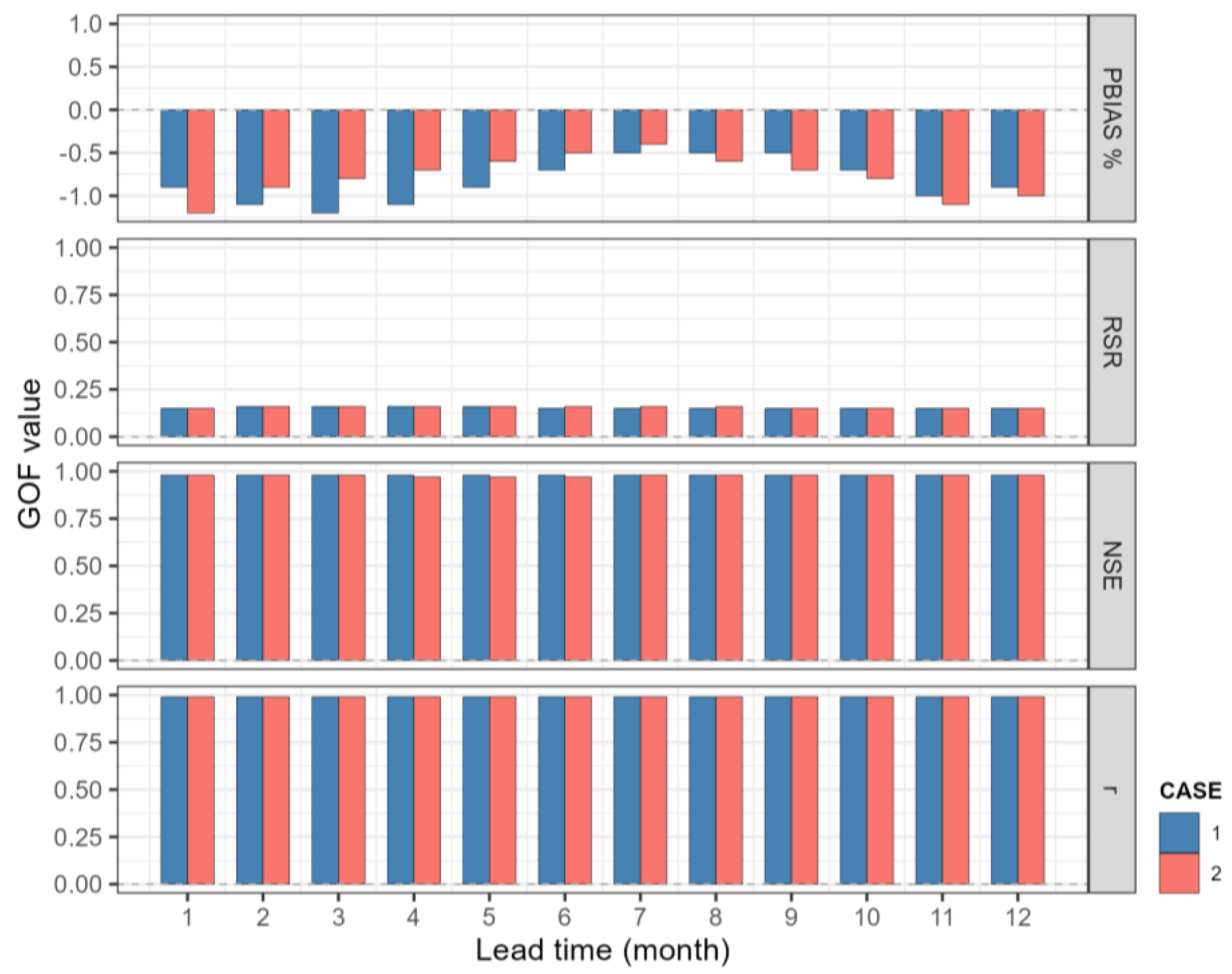
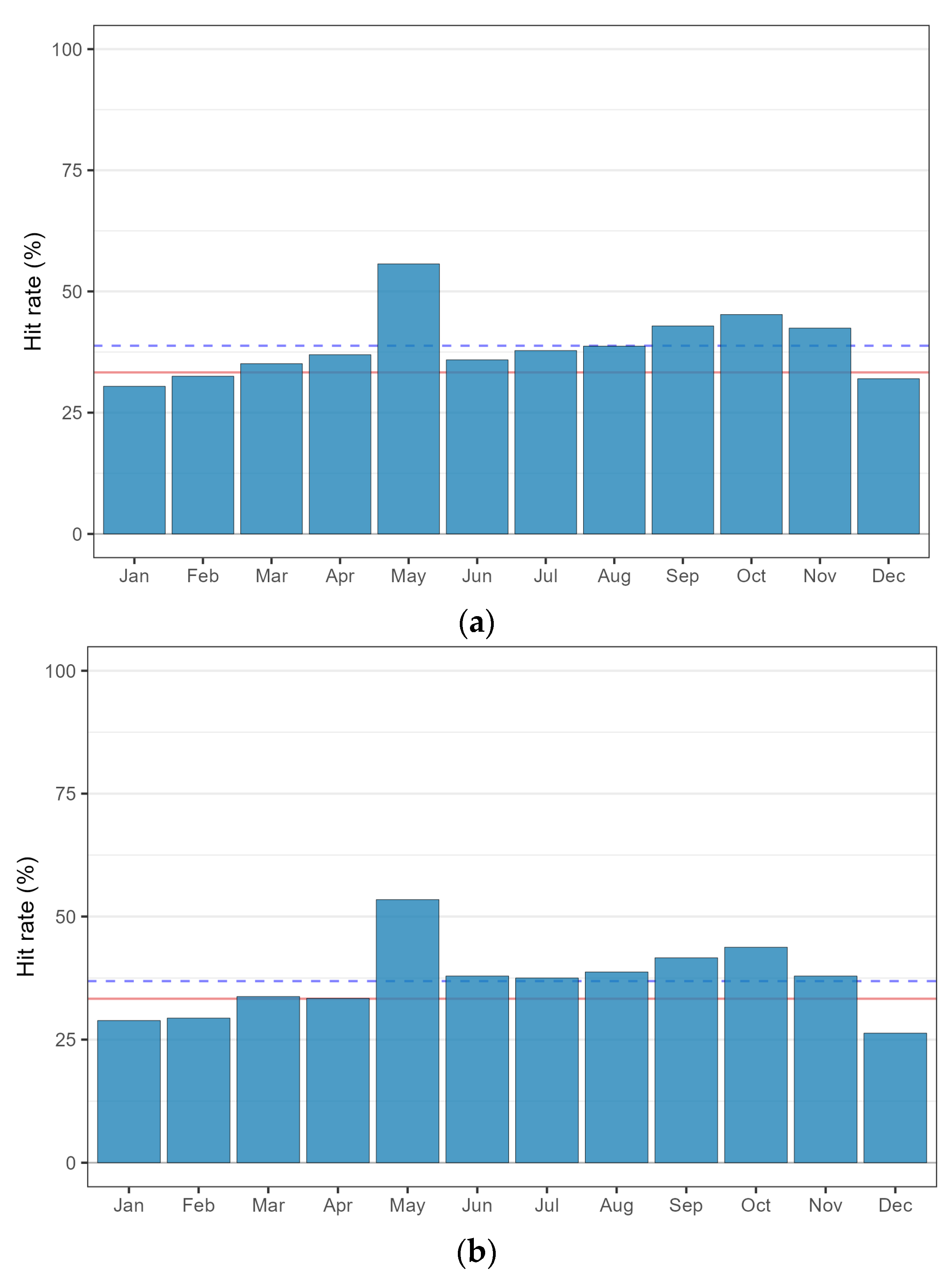

| ID | Station Name | Latitude (°N) | Longitude (°E) | Elevation (m a.s.l) |
|---|---|---|---|---|
| 146 | Jeonju | 35.84 | 127.12 | 61.40 |
| 156 | Gwangju | 35.17 | 126.89 | 72.38 |
| 168 | Yeosu | 34.74 | 127.74 | 64.64 |
| 170 | Wando | 34.40 | 126.70 | 35.24 |
| 174 | Suncheon | 35.02 | 127.37 | 165.00 |
| 244 | Imsil | 35.61 | 127.29 | 247.04 |
| 245 | Jeongeup | 35.56 | 126.84 | 69.84 |
| 247 | Namwon | 35.42 | 127.40 | 132.50 |
| 248 | Jangsu | 35.66 | 127.52 | 406.49 |
| 254 | Sunchanggun | 35.37 | 127.13 | 127.00 |
| 256 | Juam | 35.08 | 127.24 | 74.63 |
| 258 | Boseonggun | 34.76 | 127.21 | 2.80 |
| 259 | Gangjingun | 34.63 | 126.77 | 12.50 |
| 260 | Jangheung | 34.69 | 126.92 | 45.02 |
| 261 | Haenam | 34.55 | 126.57 | 16.36 |
| 262 | Goheung | 34.62 | 127.28 | 51.91 |
| 266 | Gwangyangsi | 34.94 | 127.69 | 86.70 |
| 289 | Sancheong | 35.41 | 127.88 | 138.07 |
| Predictor | Description | Provider | |
|---|---|---|---|
| Global climate index | AAO | Antarctic oscillation | NOAA |
| AMM | Atlantic meridional mode | NOAA | |
| AMO | Atlantic multidecadal oscillation | NOAA | |
| AO | Arctic oscillation | NOAA | |
| BEST | Bivariate ENSO timeseries | NOAA | |
| CPOLR | Monthly central Pacific outgoing long wave radiation index (170E–140W, 5S–5N) | NOAA | |
| EA | East Atlantic pattern | NOAA | |
| EAWR | East Atlantic/Western Russia pattern | NOAA | |
| EPNP | East Pacific/North Pacific oscillation | NOAA | |
| GML | Global mean land-ocean temperature index | NOAA | |
| MEI.v2 | Multivariate ENSO index version 2 | NOAA | |
| NAO | North Atlantic oscillation | NOAA | |
| NINO1+2 | Extreme eastern tropical Pacific SST (0–10S, 90W–80W) | NOAA | |
| NINO3 | Eastern tropical Pacific SST (5N–5S, 150W–90W) | NOAA | |
| NINO3.4 | East central tropical Pacific SST (5N–5S, 170–120W) | NOAA | |
| NINO4 | Central tropical Pacific SST (5N–5S, 160E–150W) | NOAA | |
| NOI | Northern oscillation index | NOAA | |
| NP | North Pacific pattern | NOAA | |
| ONI | Oceanic Niño index | NOAA | |
| PNA | Pacific American index | NOAA | |
| POL | Polar/Eurasia pattern | NOAA | |
| QBO | Quasi-biennial oscillation | NOAA | |
| SCAND | Scandinavia pattern | NOAA | |
| SLP_DAR | Darwin sea level press | NOAA | |
| SLP_EEP | Equatorial eastern Pacific sea level press | NOAA | |
| SLP_IND | Indonesia sea level press | NOAA | |
| SLP_TAH | Tahiti sea level press | NOAA | |
| SOI | Southern oscillation index | NOAA | |
| SOI_EQ | Equatorial SOI | NOAA | |
| SOLAR | Solar flux (10.7 cm) | NOAA | |
| TNA | Tropical northern Atlantic index | NOAA | |
| TNI | Trans-Niño index | NOAA | |
| TPI | Tripole index for the interdecadal Pacific oscillation | NOAA | |
| TSA | Tropical southern Atlantic index | NOAA | |
| WHWP | Western hemisphere warm pool | NOAA | |
| WP | Western Pacific index | NOAA | |
| Local climate index | PCP | Monthly precipitation | KMA |
| TMP | Monthly average temperature | KMA | |
| HMD | Monthly average relative humidity | KMA | |
| AvgSLP | Monthly average sea level pressure | KMA | |
| DLhr | Monthly sum of daylight hours | KMA | |
| WND | Monthly average wind speed | KMA | |
| CLOUD | Monthly average cloud cover | KMA | |
| SmallEV | Monthly sum of small pan evaporation | KMA | |
| PBIAS | RSR | NSE | r | |
|---|---|---|---|---|
| Case 1 | 0~+2.7% | 0.72~0.78 | 0.39~0.48 | 0.66~0.71 |
| Case 2 | −1.2~+2.6% | 0.74~0.77 | 0.40~0.45 | 0.67~0.69 |
| PBIAS | RSR | NSE | r | |
|---|---|---|---|---|
| Case 1 | −1.2~−0.5% | 0.15~0.16 | 0.98 | 0.99 |
| Case 2 | −1.2~−0.4% | 0.15~0.16 | 0.97~0.98 | 0.99 |
Disclaimer/Publisher’s Note: The statements, opinions and data contained in all publications are solely those of the individual author(s) and contributor(s) and not of MDPI and/or the editor(s). MDPI and/or the editor(s) disclaim responsibility for any injury to people or property resulting from any ideas, methods, instructions or products referred to in the content. |
© 2023 by the authors. Licensee MDPI, Basel, Switzerland. This article is an open access article distributed under the terms and conditions of the Creative Commons Attribution (CC BY) license (https://creativecommons.org/licenses/by/4.0/).
Share and Cite
Kim, C.-G.; Lee, J.; Lee, J.E.; Kim, H. Evaluation of Seasonal Climate Predictability Considering the Duration of Climate Indices. Water 2023, 15, 3291. https://doi.org/10.3390/w15183291
Kim C-G, Lee J, Lee JE, Kim H. Evaluation of Seasonal Climate Predictability Considering the Duration of Climate Indices. Water. 2023; 15(18):3291. https://doi.org/10.3390/w15183291
Chicago/Turabian StyleKim, Chul-Gyum, Jeongwoo Lee, Jeong Eun Lee, and Hyeonjun Kim. 2023. "Evaluation of Seasonal Climate Predictability Considering the Duration of Climate Indices" Water 15, no. 18: 3291. https://doi.org/10.3390/w15183291
APA StyleKim, C.-G., Lee, J., Lee, J. E., & Kim, H. (2023). Evaluation of Seasonal Climate Predictability Considering the Duration of Climate Indices. Water, 15(18), 3291. https://doi.org/10.3390/w15183291






